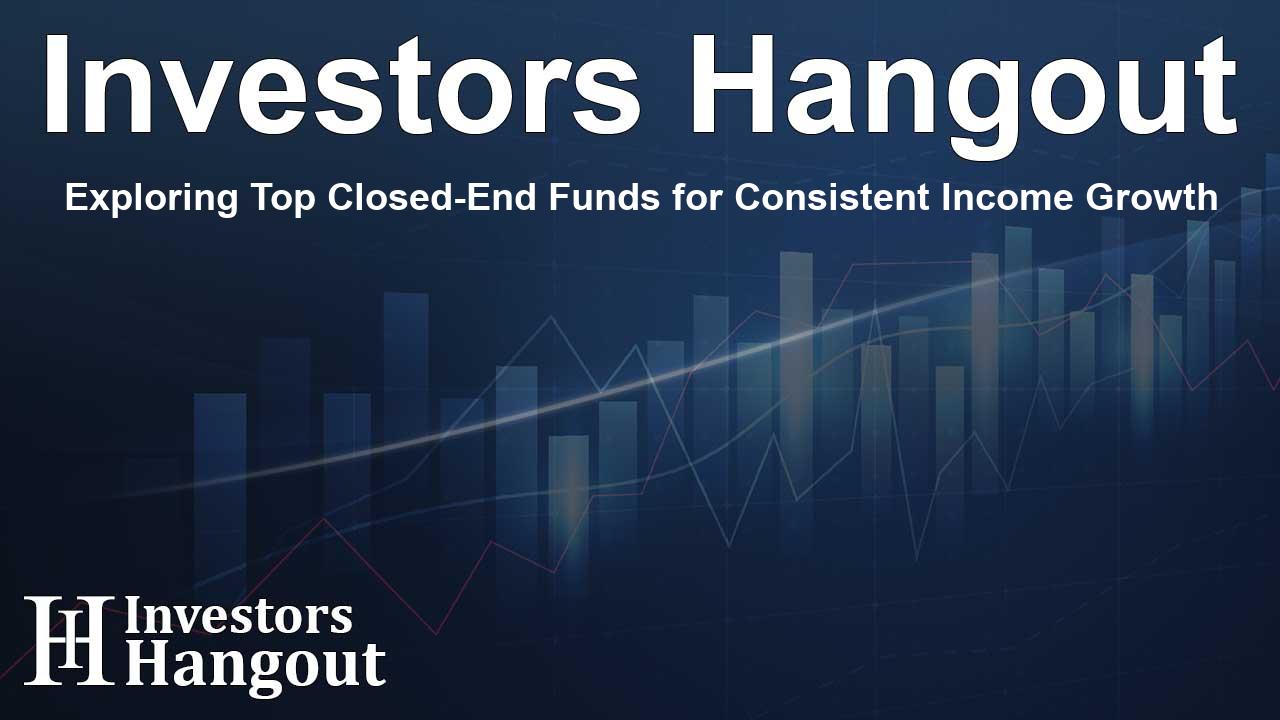Exploring Top Closed-End Funds for Consistent Income Growth

Discovering Top Closed-End Funds in Today’s Market
If you’re venturing into income investing, you might find yourself in a delightful yet challenging position: with so many promising investment options, deciding where to put your money can feel just as tough as picking between a winning stock and a losing one.
Looking back on your past investments could show that you’ve spent a lot of time sifting through solid alternatives. In this piece, we’ll explore a popular route for income generators: closed-end funds (CEFs), which frequently feature yields above 8%.
Our goal is to help you navigate these exciting opportunities and make informed decisions among multiple strong contenders. Below, I'll introduce you to three standout CEFs that not only offer high yields but also exhibit solid overall quality and performance in the market.
Our Top CEF Selections
We’re shining a spotlight on three CEFs this year that are showing exceptional performance and potential benefits. They consist of the Kayne Anderson Energy Infrastructure Fund (NYSE: KYN), Eaton Vance Tax-Managed Diversified Equity Fund (NYSE: ETY), and General American Investors Co. (NYSE: GAM).
These funds stand out for various reasons: they provide impressive yield rates between 5.2% and 8.4%, achieve returns soaring over 20% year-to-date, and trade at discounts to their net asset values (NAV), which makes them accessible in the open market.
Analyzing the Rapid Returns of Our Selected Funds
The impressive numbers behind our chosen CEFs affirm their solid performance. Each fund gives substantial yields and offers great potential deals for investors. For example, ETY trades at a respectable 3.8% discount, while other funds feature even larger discounts that attract income-focused investors.
This difference is key in understanding the underlying value of these investments and how their performance might align with overall market trends. The charm of CEFs lies in their yield on NAV being less than their yield on market prices, which relieves some pressure on management to sustain payouts.
Long-Term Holding Considerations
A wider look over the past ten years highlights a notable performance gap. ETY and GAM have both enjoyed impressive total returns of 184% and 166% respectively. In contrast, KYN has struggled with its valuation and isn't recommended for long-term holds. This volatility reflects the natural ups and downs of energy markets.
While KYN may appear attractive with its yield of 8.2%, it’s arguably a short-term option rather than a consistent income source in the long run.
Discount Analysis: Making Wise Choices
When comparing the remaining contenders, you might be tempted by GAM's appealing 14.9% discount. Yet, this value, while initially attractive, falls short of its historical average of 16.3%, suggesting it might not be as great a bargain as it seems. In contrast, ETY’s occasional premium trades bolster its attractiveness, especially since it shows slightly better historical performance.
Additionally, ETY stands out as the most generous of the three funds, boasting an 8.4% yield based on market price, which offers a compelling proposition for income investors.
Taking Advantage of Future Market Trends
Looking ahead, it’s encouraging to note that interest rate cuts are anticipated. With expectations for continued decreases, investors often seek higher yields, making high-performing CEFs even more appealing.
This is a crucial moment for those aiming to maximize their income. Funds yielding 10.5% or more—a significant step above even ETY’s offerings—are likely to catch the attention of individuals searching for steady income streams.
Ultimately, investing in vehicles that offer monthly dividends serves as a strong indicator of financial health within a fund's management team. With the connection between yield and perceived value, now is the perfect time to strategically enter these markets.
Frequently Asked Questions
What are Closed-End Funds (CEFs)?
Closed-End Funds are investment funds that raise a fixed amount of capital through an initial public offering (IPO) and then trade on stock exchanges, allowing investors to buy and sell shares like stocks.
How do yields on CEFs compare to other investments?
CEFs often provide higher yields than traditional investments, commonly exceeding 8%, making them attractive for income-seeking investors.
Why is ETY considered a top fund?
ETY boasts a generous yield of 8.4% and has shown resilience with strong total returns and a reputable investment strategy focused on household-name large-cap stocks.
What risks are associated with investing in CEFs?
CEFs can be volatile, and their discounts to NAV can fluctuate; investing in funds tied to cyclical industries like energy can also involve additional risks related to market variations.
How can one identify a strong CEF to invest in?
Investors should examine yield performance, historical returns, discounts to NAV, management strategy, and market conditions before making investment decisions.
About The Author
Contact Lucas Young privately here. Or send an email with ATTN: Lucas Young as the subject to contact@investorshangout.com.
About Investors Hangout
Investors Hangout is a leading online stock forum for financial discussion and learning, offering a wide range of free tools and resources. It draws in traders of all levels, who exchange market knowledge, investigate trading tactics, and keep an eye on industry developments in real time. Featuring financial articles, stock message boards, quotes, charts, company profiles, and live news updates. Through cooperative learning and a wealth of informational resources, it helps users from novices creating their first portfolios to experts honing their techniques. Join Investors Hangout today: https://investorshangout.com/
The content of this article is based on factual, publicly available information and does not represent legal, financial, or investment advice. Investors Hangout does not offer financial advice, and the author is not a licensed financial advisor. Consult a qualified advisor before making any financial or investment decisions based on this article. This article should not be considered advice to purchase, sell, or hold any securities or other investments. If any of the material provided here is inaccurate, please contact us for corrections.
